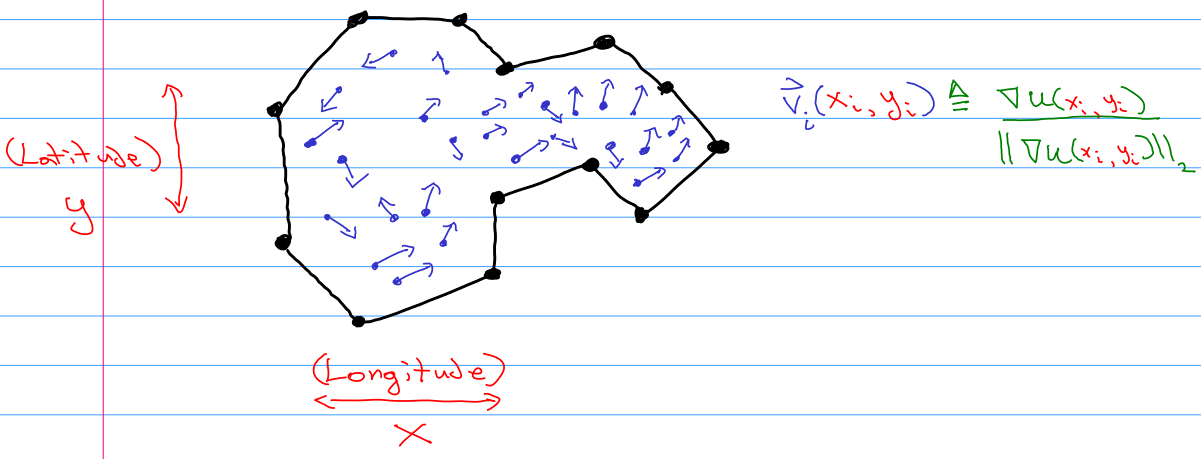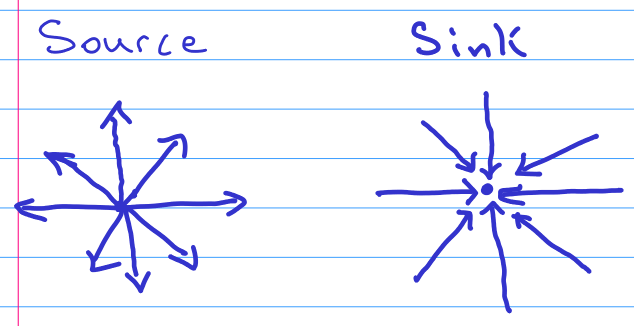Background
Suppose I collected a data set of the latitude and longitude of moose tracks within an irregular polygon, and also took a compass bearing of the direction that the hooves pointed in.

Image Credit: © Galen Seilis 2022 (used with permission)
Also suppose that the spatial sampling intensity is approximately uniform. The study area is small enough to safely ignore the curvature of the Earth, if desired.
This gets us very close to having a vector field over $\mathbb{R}^2$, only that there is not a clear notion of magnitude. To account for this I define each observation $\vec{v}_i$ to be the normalized gradient at that point in space of some hypothetical field $u : \mathbb{R}^2 \mapsto \mathbb{R}$.
I would like to take on the assumption that there exist no sources or sinks in the gradient of the field $u$. This is due to the fact that moose come and go from the potential study area. While of course moose are born and die somewhere, I want to assume that these events are rare enough to be ignored in my model. Visually this means that neither of the following two patterns occur at any point:
Because of how I defined the observations to be the normalized gradient, I was willing to assume that the gradient isn't the zero vector anywhere anyways. This precludes other field patterns as well.
Other Considerations
- At the moment I do not have a well-posed problem.
- The goal is to produce plausible patterns of flow of moose through a small area.
- Sometimes moose tracks are plausibly from the same individual due to being aligned and close together, but usually the tracks are relatively isolated.
- There are plenty of machine learning approaches that I could use to estimate a map $\mathbb{R}^2 \mapsto \mathbb{R}^2$, but I would rather use differential equations for understandability.
- At a boundary point the gradient of $u$ could be perpendicular, parallel, or neither to boundary itself.
- I am not modeling time dependence because estimating the age of a track is quite difficult.
Question
What model (and boundary conditions if applicable) would be suitable for modeling the flow of moose through a bounded region?


